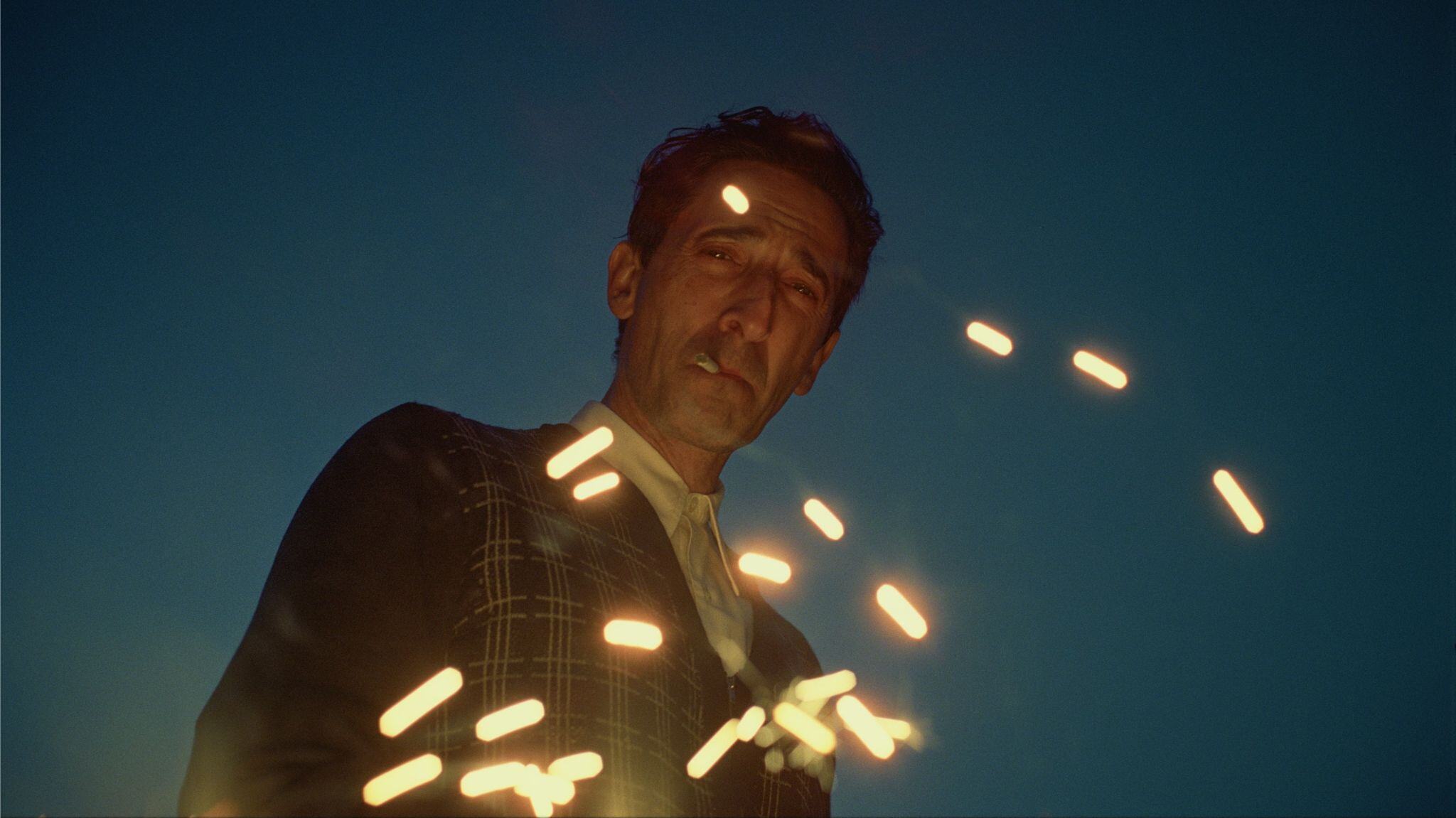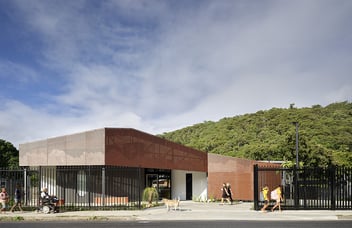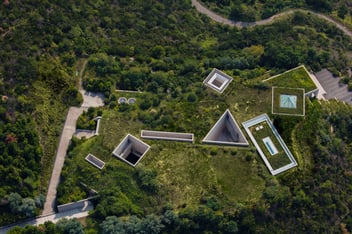The Brutalist: A Film That Captures (and Misunderstands) Architecture’s Most Controversial Style
Brutalism has always been a love-it-or-hate-it kind of architecture. Its raw concrete, stark geometry, and unapologetic presence either leave people in awe or send them running in the opposite direction. The 2024 film The Brutalist, starring Adrien Brody, taps into that very tension—offering a moody, visually striking take on an architectural movement that was as much about ideology as it was about aesthetics.
For architects, designers, and anyone fascinated by the built environment, The Brutalist is both a triumph and a missed opportunity.
A Brutalist Feast for the Eyes
Director Brady Corbet (known for The Childhood of a Leader and Vox Lux) doesn’t hold back in immersing audiences in the weight and drama of Brutalism. The film’s cinematography leans into the monumental, using shadows and rigid compositions to make every structure feel like a character in itself. And that’s the film’s strongest suit—it gets the scale, the gravity, the sheer presence of Brutalism. The way the camera lingers on textured concrete surfaces, the way light interacts with geometric voids—there’s a reverence here that architects will appreciate.
It helps that Corbet brought in architectural historian Jean-Louis Cohen as a consultant. That credibility shows, with Brutalism depicted in all its sculptural, sometimes oppressive, sometimes poetic grandeur.
.jpg?width=1200&height=723&name=TBR_LP_Rec709_UHD_FLAT_3840X2160%20(1).jpg)
The Brutalist still A24
.png?width=1200&height=675&name=Blog%20Post%20-%20The%20Brutalist%20(2).png)
The Brutalist still A24
But Does It Really Get Brutalism?
Where the film stumbles is in its understanding of why Brutalism emerged in the first place. The movement wasn’t just about making things look dramatic—it was a response to war, a statement of rebuilding, a vision for accessible, functional, and honest architecture.
The Brutalist sometimes feels like it reduces the movement to a moodboard of dramatic angles and concrete slabs, rather than engaging with the deeper philosophy that shaped it. The lead character, an ambitious architect loosely inspired by Le Corbusier, Paul Rudolph, and Marcel Breuer, is compelling—but at times feels more like an exaggerated artistic genius archetype than a fully realised figure.
Harry Seidler, one of Australia’s most celebrated modernist architects, once said, “Brutalism is a pathetic thing too, and it is a sort of an English term applied to buildings done there – bad imitations of Corbusier’s good concrete.” On the flip side, British critic Reyner Banham defended the movement, saying, “Brutalism is not concerned with the material as such but rather the quality of material.” The truth lies somewhere in between.
That’s where the film misses a beat—Brutalism wasn’t just about making things look a certain way. It was about using materials honestly, making architecture democratic, and challenging the polished aesthetics of previous styles.
 The Brutalist still A24
The Brutalist still A24
Brutalism Down Under: Australia’s Own Concrete Icons
For Australian architects, Brutalism isn’t just a European import—it shaped some of our most distinctive buildings. The film might not dive into these, but here are a few worth mentioning:
Harold Holt Memorial Swimming Centre (Melbourne) – Originally built in 1927 and redesigned in 1969 by Kevin Borland and Daryl Jackson, this aquatic centre proves Brutalism can be civic, functional, and even playful.

Harold Holt Memorial Swimming Centre, Melbourne 2014
Sirius Building (Sydney) – Designed by Tao Gofers in 1979, this social housing project in The Rocks is one of the country’s most polarising Brutalist structures. Loved by preservationists, loathed by developers—it embodies everything Brutalism stands for.
Sirius Building, The Rocks, Sydney 2019
Warringah Civic Centre (Dee Why) – Opened in 1973 and designed by Christopher Kringas and Colin Madigan, this is Brutalism at its most institutional, proving the style was embraced not just for housing, but for government buildings too.

Warringah Shire Council Civic Centre, Dee Why 1985
And while the ‘70s were Brutalism’s golden age, it hasn’t disappeared. Modern structures like Perth’s Marsala House by Iwan Iwanoff and Sydney’s UTS Tower continue to remind us that this movement still has a place in contemporary architecture.
The Brutalist and Its Awards Season Run
Whether you love it or loathe it, The Brutalist has firmly established itself as a standout contender this awards season. Its breathtaking cinematography, powerful performances, and bold storytelling have earned widespread recognition across the industry.
The film’s winning streak began with the Golden Globe Awards, where it took home Best Motion Picture (Drama) and Best Director (Brady Corbet). It then made waves at the BAFTA Awards, securing victories for Best Director, Best Actor (Adrien Brody), and Best Original Music. The momentum continued at the Academy Awards, where it won three Oscars, including Best Actor for Brody, Best Cinematography, and Best Original Score. Finally, The Brutalist was honored by the American Film Institute, earning a spot on its prestigious Top 10 Films of 2024 list.
With such high praise from both critics and audiences, the film has proven that its striking visuals and thought-provoking narrative have left a lasting impact.
.jpg?width=1200&height=675&name=Blog%20Post%20-%20The%20Brutalist%20(3).jpg)
The Brutalist still, A24
Brutalism: Still Standing or Fading Away?
So where does that leave Brutalism today?
Cities like London, Boston, and Sydney still champion their Brutalist icons, from the Barbican Centre to Boston City Hall. Others, however, have rushed to demolish them in favour of more glass-and-steel contemporary builds.
But Brutalism has a resilience that mirrors the structures themselves. Despite decades of criticism, its influence still runs deep in contemporary architecture. There’s a raw honesty in its use of materials—something refreshing in today’s world of hyper-curated, ultra-sleek facades.
Brutalism Reimagined: A Film Worth Watching?
Is The Brutalist a must-watch for architects? Absolutely. It’s a rare film that puts architecture at the forefront, visually immersing viewers in the movement’s intensity. But it also leaves gaps—particularly in exploring the deeper social ideals that Brutalism was built on.
What the film does best is spark conversation. Whether you love Brutalism, hate it, or sit somewhere in between, there’s no denying its impact. And that, more than anything, is what makes The Brutalist a film worth talking about.







